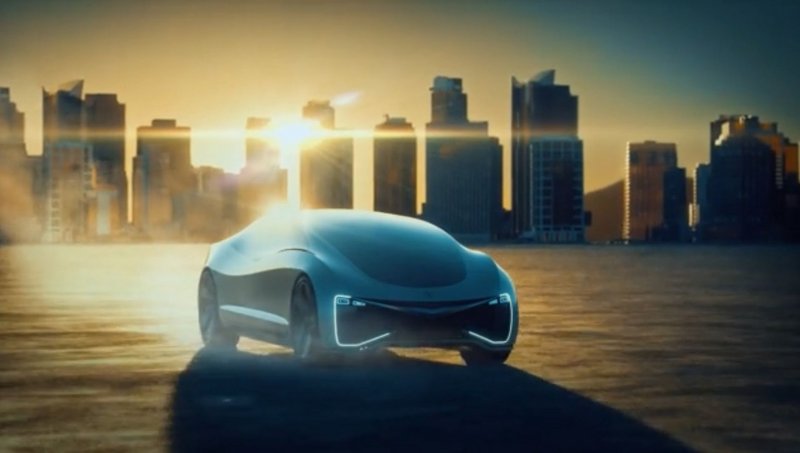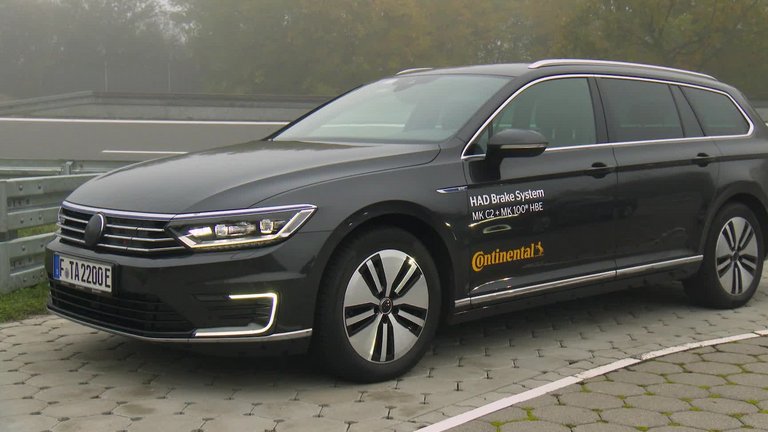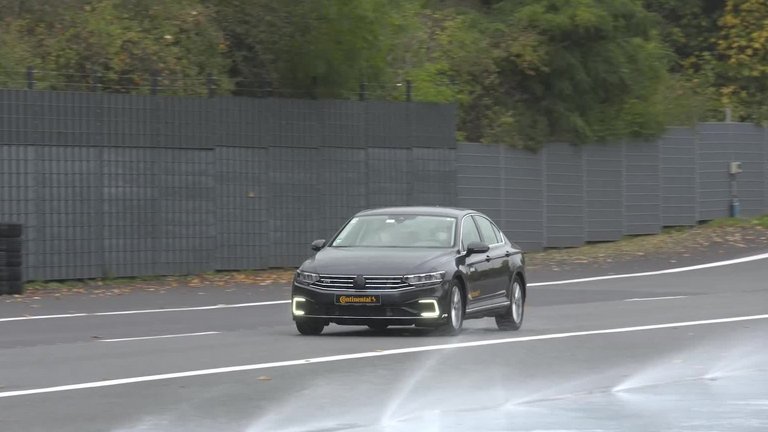Future Motion System – Motion is Picking Up Momentum
The new centralized vehicle E/E architecture paves the road for new system features: Modularization, centralization, scalability, standardized interfaces, portability, and hardware independence. Software is beginning to define hardware characteristics – instead of the other way round. With the increasing complexity of new vehicles, it will no longer be possible to manage a growing number of traditional electronic control units (ECUs) . Instead, more and more ECUs – and especially their software content – will partially evolve into the new vehicle E/E architecture. A combination of traditional ECU and Domain Controllers (for safety requirements of redundancy) together with High-Performance Computers (HPCs) will host updateable software modules which can be reused in different vehicles. This is particularly relevant for Automated Driving (AD) as cross-domain longitudinal, lateral and vertical motion control functions within the SensePlanAct approach require a new system architecture: The Future Motion System.
More motion control functions
In previous vehicle generations, hardware and software were firmly “married” to each other. Each function had its “own” electronic control unit. With the evolution from support and safety functions for manual driving (like Hill Start Assist or Antilock Brake System) to more advanced functions for assisted driving (e.g. Adaptive Cruise Control or Lane Keep Assist), the vehicle E/E architecture became a complex network of dedicated ECUs with widely distributed functional units, all serving one common goal: to control vehicle movement comfortably and safely in the current driving situation.
Now, this works well with a limited number of functions. However, when the number of assisted, automated and autonomous driving functions increases – and that is exactly what is happening – adding more hardware will no longer smoothly manage the growing complexity. Considering the wide variety of available motion actuators (brakes, steering, motors, dampers, springs, …) that can be utilized for these functions, the necessary next step is to pursue an alternative approach. A Future Motion System is required to handle all levels of longitudinal, lateral and vertical vehicle motion.
A centralized E/E architecture with one server per domain/function area is the new answer to handling the constantly increasing level of complexity. Former individual systems/ECUs thus become functional blocks which get hosted on a server. The resulting validated modules will be scalable and portable – they can be reused in many potential hosts as required in the given vehicle-specific E/E architecture. This kind of centralization and “disintegration” of functional units (“boxes”) reduces the complexity of vehicle motion control.
For Automated Driving, this architectural revolution is essential: Vehicle motion (moving the vehicle in the longitudinal, lateral and vertical dimensions) is an integral part of Continental’s SensePlanAct approach. Along with “Perception” and “Driving Strategy”, “Motion Control” is one of three aspects that make assisted, automated and autonomous driving possible in the first place, from stability to maneuver level!
The Future Motion System
The growing number of motion control functions is motivated by goals in the areas of cruising, maneuvering and safety – on the path to Vision Zero, the ultimate goal of accident-free driving. All of these functions seek to influence vehicle motion. When this happens across domain borders, an innovative approach is even more important. This cross-domain networking requires coordination, communication, expandability and updateability.
The Future Motion System consists mostly of functional software blocks – instead of many hardware “boxes”. It can be integrated into different hardware products such as central server platforms, smart sensors or actuators. By following this approach, it is possible to offer perfectly tailored solutions for varying requirements. Utilizing the potential of increasing computing power, Continental experts are already working on the next level of system design: Future vehicle systems will have no mechanical fallback levels for pedals and steering. Instead, they will offer more freedom to allocate components in the vehicle – which will also support new interior designs of future cars.
Acting as a command center, the entire Future Motion System (FMS) will consist of several functional building blocks:
- The Vehicle Module controls the defined vehicle path in terms of assisted, automated or autonomous driving maneuvers.
- The Chassis Module tightly integrates requirements by the Vehicle Module with safety and stability functions (e.g. ABS, ESP) and centrally controls the available motion actuators.
- Ego Motion is the common vehicle signal database for vehicle dynamics states and odometry data needed internally by FMS components or other consumers in the vehicle network.
- Energy Management handles all aspects of efficiency in the FMS.
- Fallback motion control paths for AD SAE Level 3 and higher serve to meet safety and availability requirements of AD.
Thus, FMS will provide physical motion and related signals/data in the form of one suite of central “services” which – as an abstraction layer – decouple the vehicle’s driving functions from the motion actuators and dynamics sensors. These functional building blocks communicate via well-defined interfaces and support easy composition of high-demanding future vehicle systems. For this reason, along with functional software blocks, FMS includes a flexible and scalable allocation concept for optimal deployment of these building blocks to all variants of new vehicle E/E architectures, independent by design from pre-fixed HW components.
All in all, FMS will simplify vehicle integration as well as the development of new sophisticated vehicle driving functions with increased performance, greater functional scope and more features.
Motion and the future of braking
The Future Motion System translates driving to the motion actuators, and the brake system is a crucial one among them. Centralization and “disintegration” affect the entire vehicle E/E architecture, and accordingly it is true for the brake system alone. Within a centralized E/E architecture with software function blocks – an architecture that will consist of standardized hardware at some point in the future – the braking system functions will eventually also become one of many decentralized smart functions which will be controlled by central servers. This may be a long-term perspective, but the technology needs to be prepared.
When this “modularization” of the braking functions takes place, only a limited amount of computing power remains in the actuators (calipers and drum brakes). This brings an enormous transformation for the braking system as a whole: The individual functions of a braking systems evolve to become individual products. They follow the principle of modularity. They are pre-validated and proven. Owed to standardized interfaces, they can be reused in different contexts with the Future Motion System approach. This new portability is efficient and economical.
For Continental, it is part of the DNA to prepare the technologies needed to decentralize the braking system functions while ensuring the reliable function of distributed braking as part of a new vehicle E/E architecture and new vehicle concepts. Transforming the current “one-box concept” of an integrated braking system into a distributed solution is an innovation path. This is an important contribution to the future of mobility because digitalization, networking, electrification and Automated Driving bring new requirements to the braking system.





